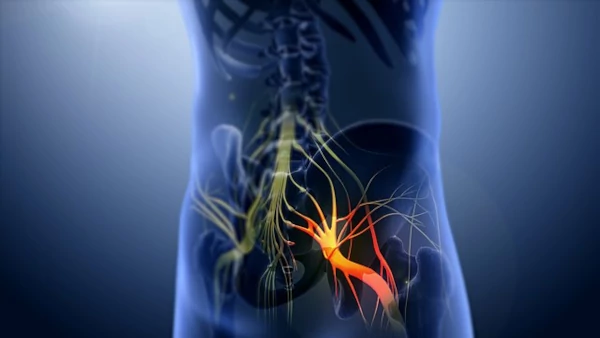Bell’s Palsy is a condition that impacts the facial nerve, causing sudden weakness or paralysis on one side of the face. It can be a challenging experience for anyone but sometimes it resolves its own. Proper physiotherapy is helpful to speed up the recovery. we’ll talk about causes for Bell’s Palsy, its symptoms, and how physiotherapy can help to manage it.
Understanding Bell’s Palsy
What is Bell’s Palsy?
Bell’s Palsy is a condition characterized by the sudden onset of temporary facial muscle weakness or paralysis, typically on one side of the face. Bell’s Palsy is believed to result from inflammation of the facial nerve, which controls facial muscles. The exact cause of this inflammation is often unknown, but viral infections, especially the herpes simplex virus, are frequently associated with its development.
What are the Symptoms of Bell’s Palsy?
The symptoms of Bell’s Palsy can vary in severity, but they typically include sudden weakness or paralysis on one side of the face. Other symptoms may include:
- Loss of facial muscle control
- Drooping of the mouth or eyelid
- Difficulty closing the eye on the affected side
- Drooling
- Loss of taste sensation
- Headache
- Pain around the jaw or behind the ear
Physiotherapy Management of Bell’s Palsy
The Role of Physiotherapy in Bell’s Palsy Management
Physiotherapy plays an important role in the management of Bell’s Palsy. The goal of physiotherapy is to restore muscle function, improve facial symmetry, and prevent the development of long-term complications. The physiotherapy management of Bell’s Palsy typically involves the following:
Early Diagnosis and Treatment
Early diagnosis and treatment are important in managing Bell’s Palsy effectively. The physiotherapist will conduct a thorough evaluation to determine the severity of the condition and develop a personalized treatment plan.
Facial Exercises
Facial exercises are a crucial component of physiotherapy for Bell’s Palsy. These exercises are designed to strengthen the facial muscles and improve muscle coordination. Some common exercises include:
- Eye Blinking: This exercise involves repeatedly closing and opening the affected eye to improve eyelid closure and prevent dryness.
- Lip Puckering: This exercise involves pursing the lips and holding for a few seconds to improve lip movement and control.
- Smiling: This exercise involves trying to smile on the affected side to improve facial symmetry.
Massage and Mobilization
Massage and mobilization techniques are often used in physiotherapy to improve blood flow, reduce pain, and restore muscle function. The physiotherapist may use gentle massage techniques and passive range of motion exercises to improve muscle flexibility and mobility.
Electrical Stimulation
Electrical stimulation is a non-invasive treatment that uses small electrical currents to stimulate the facial muscles. This technique can improve muscle strength and reduce muscle atrophy, which can occur due to disuse.
Conclusion
Bell’s Palsy can be a challenging condition to manage, but with the right physiotherapy management, it can be effectively treated. The physiotherapy management of Bell’s Palsy typically involves early diagnosis and treatment, facial exercises, massage and mobilization, and electrical stimulation. With the help of a qualified physiotherapist, individuals with Bell’s Palsy can regain their muscle function, improve facial symmetry, and prevent long-term complications.
FAQs
How long does it take to recover from Bell’s Palsy?
Recovery time can vary, but most people recover within 3-6 months with the help of physiotherapy management.
Is Bell’s Palsy a permanent condition?
No, Bell’s Palsy is usually a temporary condition that can be effectively treated with physiotherapy.
Can Bell’s Palsy affect both sides of the face?
It is rare, but in some cases, Bell’s Palsy can affect both sides of the face.
Is physiotherapy the only treatment for Bell’s Palsy?
No, in addition to physiotherapy, other treatments such as medication and surgery may also be used depending on the severity and cause of the condition.
Can Bell’s Palsy recur?
Yes, in rare cases, Bell’s Palsy can recur. However, with proper management and follow-up, recurrence can be prevented.
Featured image by Felton Davis on Flickr



